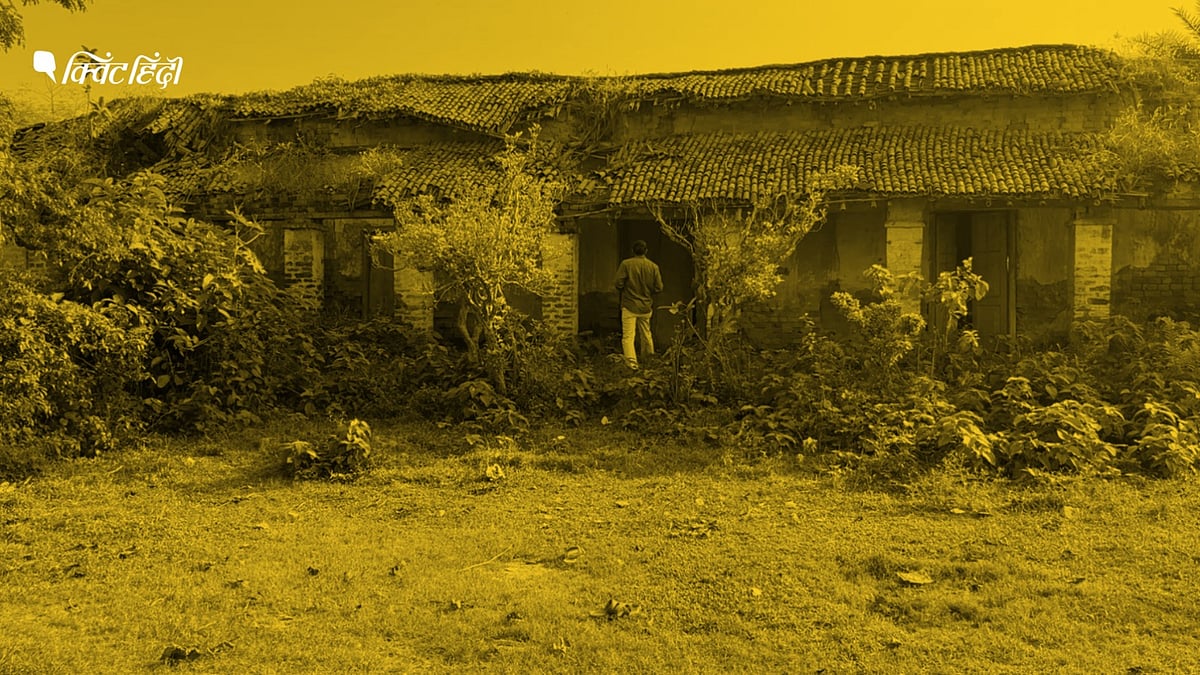Sanskrit Education in Bihar: Colleges Used As Cattle Sheds, Schools in Ruins
The Quint's team visited Sanskrit schools in Darbhanga and nearby districts, and what we found was deeply alarming.

advertisement
The language often described as the “language of the gods” is today struggling for survival in Bihar. While politicians routinely invoke Sanskrit as “India’s cultural identity” during election campaigns, the condition of Sanskrit schools in Darbhanga and several other districts paints a starkly different picture — one of neglect, disrepair, and complete institutional collapse.
The Quint's team visited Sanskrit schools in Darbhanga and surrounding areas, where we found a story of severe neglect.
Schools Turned Into Ruins
At the entrance of one Sanskrit school in Pachadhi village, broken roofs and collapsed walls are the first things visible. Spaces where chants of mantras once echoed now lie silent and damp, filled with the stench of decay.
The old school building has almost entirely crumbled. Bricks have fallen from the walls, and wild grass has overtaken the campus.
Former school peon Ram Parikshan Mandal says,
Ram Parikshan Mandal claims that the Sanskrit school located in Pachhadi, Darbhanga, was once counted among the top 10 Sanskrit schools of Bihar.
The grandson of the school's first headmaster and former principal of MLSM College, Dr. Vidyanath Jha, says:
He adds: "But people’s inclination shifted towards modern education. During the Congress era, Sanskrit education received support. Now governments are simply letting it collapse. In the name of modern education, Sanskrit has been pushed to the margins. Earlier, the Mahant of Pachhadi Sthan used to look after the school, but even the condition of Pachhadi Sthan has changed now.”
Goats Tied Inside College, Library Turned Into a Bedroom
Right next to the school, it stands Baba Saheb Ram Sanskrit College, where a lock hangs on the common room door. Outside the common room, a few goats are tied—making it clear that this place has now become a shelter for animals, not an institution of learning.
The college library has turned into a bedroom. Old Sanskrit books lie buried under thick layers of dust and cobwebs.
Hostel Shut Down
The women’s hostel, built for female students, has been shut for years. There are no security guards, and the building is in a dilapidated state.
To understand the condition of Sanskrit schools, we contacted teachers in Darbhanga as well as in Madhubani and Saran districts. Rajendra Jha, a teacher from Madhubani, says,
Uday Narayan, a teacher at a Sanskrit school in Saran district, says:
According to teachers, where a district once had 300–400 Sanskrit teachers, now hardly 100 remain. Salaries are delayed for months, and there is no fund for repairs or even basic facilities.
Numbers Also Tell the Story of Decline
According to Bihar government data, the state has more than 531 Sanskrit schools, but teacher shortages, crumbling infrastructure, and lack of funds have pushed these institutions into a battle for survival rather than education.
Has Sanskrit Been Reduced to Just a ‘Poll Language’?
Leaders have projected Sanskrit as the “language of the gods” and “the soul of Indian culture,” turning it into a political slogan. But on the ground, their seriousness toward this language and the institutions associated with it is close to zero.